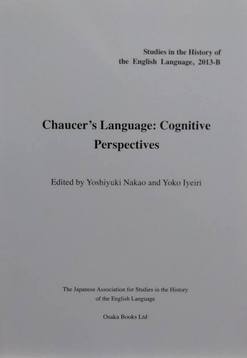“Cognitive Aspects of Negation in The Tale of Melibee, The Parson’s Tale, and A Treatise on the Astrolabe”
Bibliographical details
Iyeiri, Yoko. 2013. “Cognitive Aspects of Negation in The Tale of Melibee, The Parson’s Tale, and A Treatise on the Astrolabe“, in Chaucer’s Language: Cognitive Perspectives, ed. Yoshiyuki Nakao & Yoko Iyeiri, pp. 5-25. Suita: Osaka Books.
If you find it difficult to obtain this paper, please feel free to contact me.
Negative constructions in Chaucer’s prose works
This paper discusses negative constructions in three prose works by Chaucer from cognitive perspectives. Findings in this study include:
- Multiple negation is fairly frequent in The Tale of Melibee and The Parson’s Tale, while it is not so frequent in A Treatise on the Astrolabe. This contrast shows that multiple negation was still a feature of elaborate style in late Middle English.
- It has often been attempted to link multiple negation with emphasis, but this has not always been successful as it was a very common feature of negation in Middle English. Instead, it is perhaps wise to focus on weakness of negation as with negation with ne alone.
- The subject type is also relevant to the choice of negative constructions. It is more likely for noun phrase subjects to co-occur with multiple negation than for pronominal subjects. Also the coding of negation is conditioned by the existence or absence of the subject. Multiple negation is much less frequent when the subject is unexpressed.
Related publications
- Iyeiri, Yoko. 2010. “Negation in Different Versions of Chaucer’s Boece: Syntactic Variants and Editing the Text”. English Studies 91: 826-837.
- Iyeiri, Yoko. 2010. “Negation in Fragments A, B and C of the Hunter Manuscript of The Romaunt of the Rose“, in Language Change and Variation from Old English to Late Modern English: A Festschrift for Minoji Akimoto, ed. Merja Kytö, John Scahill & Harumi Tanabe, pp. 79-101. Bern: Peter Lang.

